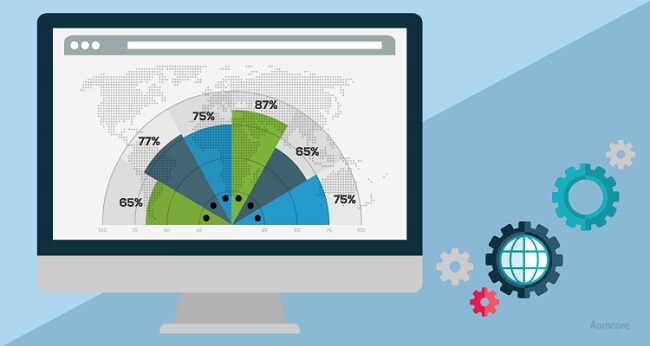Marketing no longer relies on assumptions and gut feeling alone. Today, data-driven innovations are guiding marketers and showing them the best ways to operate. Data has the potential to be your most valuable marketing resource. With the right information in hand, you can create scalable and repeatable marketing processes.
In an age where digital makes things more accessible, things need to change dramatically to ensure the safety of all online users.
Data-driven innovation is an important pillar of the source of growth in the 21st century. The combination of many processes, including the increasing number of social activities on the Internet and the falling cost of collecting, storing, and processing data, leads to the generation and use of big data – commonly called “Big Data”. These large datasets are becoming economically valuable, enabling new companies, processes, and products to create a significant competitive advantage.
Below we will look at how data will drive change in 2023 and how this will impact your online campaigns for the year ahead.
What is Data Driven Innovation?
Essentially, data-driven marketing is the strategy of using customer information for optimal and targeted messaging. The rising quality and quantity of marketing data has seen many companies begin to implement this approach for creative production and automation.
Data-driven decision-making is the process of taking answers to questions like who, when, where, what message, and making them a part of your marketing strategy moving forward.
Data-Driven Marketing Trends
64% of marketers “strongly agree” that data-driven marketing is critical in today’s landscape. Below are some of the most important steps to consider when creating your plan.
1. The importance of first-party data
Laws like GDPR and California’s consumer privacy law have reduced consumers’ rights to hold and use third-party data. Additionally, Firefox, Safari, Bing, and Chrome, which together control more than 90% of the browser market, have each said they intend to end privacy restrictions in the future. In response, marketers are turning to primary data – data they capture from their target audience. As restrictions on third-party data continue to take hold, first-party data will only grow in importance.
2. Understanding the new buyer’s journey
Today’s customer journey is more fractured than ever. A recent Google study found that today’s customer journey can have between 20 and 500 touchpoints, depending on the complexity of the purchase.
Additionally, consumers have higher expectations for their experience than ever before. Your data-driven processes must enable consistent channels and create a unified brand experience for each customer. Failure to do this will result in you losing their business. This makes it even more important to get the right features for your marketing channels and touchpoints. With so many different brand interactions taking place in each customer journey, you need to carve out marketing programs that drive leads and influence revenue so you can invest more in them.
3. Consumers have high expectations for personalization
As marketers capture more first-hand data than ever before, consumers expect a greater experience in return. 80% of consumers are more likely to purchase a product or service from a brand that delivers a personalized experience.
Your data-driven processes must enable consistent channels and create a unified brand experience for each customer. Failure to do this will result in you losing their business.
4. Brand loyalty is fading
In 2023, you can’t count on unearned brand loyalty. Marketers need to make sure they deliver a seamless experience to every customer across every channel – otherwise, they’re just a click or a call away from opting out of a competitor. In a recent survey, 32% of consumers said they would stop shopping with their beloved brand after just one bad experience.
If you connect potential buyers quickly with the right person to meet their needs, you will have a better chance of winning their business. If you make them wait, you may lose them forever. 59% of customers pay within 10 minutes of being booked.
5. Marketers need to do a better job of integrating their data tools
When you want your opportunities to follow a certain path to become customers, connecting your data tools will allow you to guide them effectively. Your domain will be well organized because the information it relies on is centralized. Integration also helps break down data silos, as it makes it easier to understand how your plans are working, how to budget, and how to best use your resources.
6. AI and marketing automation is more important than ever
To enable personalization, marketers are relying more on AI and marketing automation. Leading marketers are offering AI for everything from optimizing social media and targeting audiences to customizing the web experience and finding insights from phone conversations at scale. If you don’t invest in AI now, you will be left out soon.
What Will Shape Data-Driven Innovation in 2023
When it comes to data-driven marketing trends in 2023, we’re looking at the different ways in which marketers will access the data needed to run marketing campaigns effectively.
For organizations looking to expand or improve data-driven decision-making capabilities, some important factors may impact their efforts in the coming year.
The Cloud and Data as a Service will allow businesses to access key data collected and stored by third parties through cloud services on a pay-as-you-go or subscription basis. This reduces the need for companies to develop their own expensive data collection and storage systems, reducing costs and quickly deploying new data to the market.
Data governance and regulation are taking center stage again as governments increasingly introduce laws designed to control the use of personal data by others. Following the steps of European GDPR, Canadian PIPEDA, and Chinese PIPL, other countries are looking to introduce their own laws to process and protect personal data. Gartner estimates that nearly two-thirds of the world’s population will be covered by GDPR by 2023.
Cloud-based personal data collected will be the next big thing for data analytics, with human resources and finance leading the pack. Expect to invest heavily in cloud-based technology solutions that give users immediate access to the information they need. Businesses that take advantage of cloud-based self-service analytics can strengthen their competitive advantage and increase efficiency by putting data into the hands and minds of employees who can benefit. and it.
Expect continued progress in data democratization, which seeks to enable everyone in the organization – regardless of technical expertise – to have a positive relationship with data and discuss it with confidence. This leads to better decision-making and improves the customer experience.
Data democratization enables non-employees to collect and analyze data without the assistance of data managers, system administrators, or IT staff.
Finally, as the speed of business continues to increase and data becomes more complex, organizations can rely on the company’s Data Fabric architecture. A data warehouse is a collection of architectures and services that provide consistent services across multiple endpoints that span multiple cloud environments and provide end-to-end solutions.
It creates a common data management system that can scale across a wide variety of on-premises, cloud, and cloud services and reduce planning, integration, and data management tasks by up to 70%. Expect data-heavy organizations to adopt data structures to simplify data management and increase operational efficiency.

How Data-Driven Innovation Will Change in 2023
The availability of data, not only business records but also the process of behavior, relationships, communication, situations, and consumption, brings insights that can create efficiency, focused on both treatment and social activities, to achieve a large number required for social involvement in this. community and people.
The combination of data, the massive computational resources provided by the cloud, algorithms that can be executed at this scale, and the use of emerging technologies such as artificial intelligence and machine learning will reduce the cost to have a social impact.
Technology has evolved, while the skills required to apply and adopt the technology are diminishing. Emerging examples – open-source technologies like Copilot are just the beginning. Professionals in any field can apply technology, and direct data, without being experts in data management themselves.
Data and the insights it provide can be a powerful tool for identifying, analyzing, and solving business problems immediately. As we move forward, we will see an increase in relying on data as a problem solver and a way to reduce inefficiencies and redundancies to improve the user/customer experience.
A personalized customer experience will be a game changer
What we have seen so far is the enormous reach and scale of technology that helps so much. Professionals in fields such as health, sociology, economics, politics, business, finance, and education, will be able to combine machine-generated data to create personalized experiences. Service delivery, and customer satisfaction, at regional, national, and individual levels. Witness the number of platforms developing AI-based courses.
Sustainability will drive cloud adoption
Over the years, companies have realized that environmental, social, and governance (ESG) management plays an important role in their operations. At a time when the world is facing climate change, the challenges we face require everyone to be part of the solution. ESG goes beyond newspapers and headlines, companies are adopting sustainability goals, and sustainability is part of the increasingly technological way of product identification. Carbon footprint is placed on equal footing with price, performance, and user experience.
Real-Life Examples of Data-Driven Innovation
So, let’s take a look at some examples of data innovations where companies built their campaigns around their data growth statistics in 2023 to generate positive results:
- House of Cards – This Netflix show was one of the first to air, and it was a hit. So much so that back in 2013, subscribers said that this show would be the reason they kept their subscription.
But how could Netflix have anticipated the success of the show? Simple, data. They analyzed data and discovered a correlation between the British version of the show as well as fans of director David Fincher and actor Kevin Spacey. They bought the three together and launched a global phenomenon. - The dynamic duo: Beer and nappies – Back in 1992, a Teradata analyst found that men were likely to buy beer when stopping at Walmart to buy nappies. SO, she suggested putting these tow incredibly different products near one another and increased the sales of both products significantly.
- QuickBooks – Before QuickBooks was developed, Intuit that created the program had another successful finance management tool. The team developed a platform that was intended for personal use, but after some research, it was found that most people used the tool for business purposes. Quicken was then transformed to handle both personal finances as well as that of their businesses, bringing QuickBooks to life.
- Very – Geolocation is the practice of understanding where a customer is using your site from the GPS location of your link pings. Although geolocation is important for the site’s functionality, as is the use of the correct language and correct currency rates, there’s more. The clothing store uses geolocation data from its customers to determine the current weather conditions outside their homes. Then, depending on the weather, they will arrange the home page. If it’s cold, a message will pop up prompting customers to layer up as well as pair with the newest clothes in the store. Likewise, if it’s hot outside, warm summer clothes like a tank top are recommended.
- OkCupid – With over 50 million users now in 2021, the dating app OkCupid has a huge pool to tap into. Along with using data to match users, OkCupid has turned its data into engaging content. Every month, OkCupid publishes its “Dating Data Center” report. This aggregates user data into compelling statistics on the platform. Although it does not directly affect the quality or sales of the product, these posts attract customers.
- Olay – When you think about skincare, the first thing that comes to mind is probably not horror movies. It is not a theme that will appear in any store. However, by analyzing customer data ahead of Superbowl 2019, Olay realized that one of the most widespread interests outside of skin care for their brand users and created their Superbowl ad specifically around this theme.
The Future of Data-Driven Innovation
A data-driven digital marketing strategy should be a key aspect to your overall digital approach. With the data-driven innovations set to be focal points of more and more strategies in the future, it’s more important than ever that customer data is incorporated into your marketing.
When data is used in conjunction with the appropriate technology, it gives you the possibility to build powerful, creative campaigns that connect with your audience on a deeper, more authentic level. By understanding your customers and anticipating their needs, a data-driven strategy can provide marketers with a streamlined way to stay connected with a target audience.
This blog post is Last updated on Feb 20th, 2023.





Tell us your thoughts in the comments